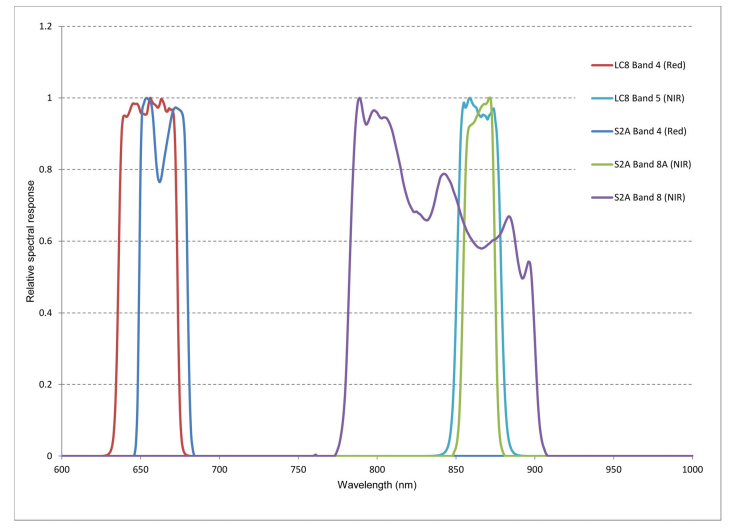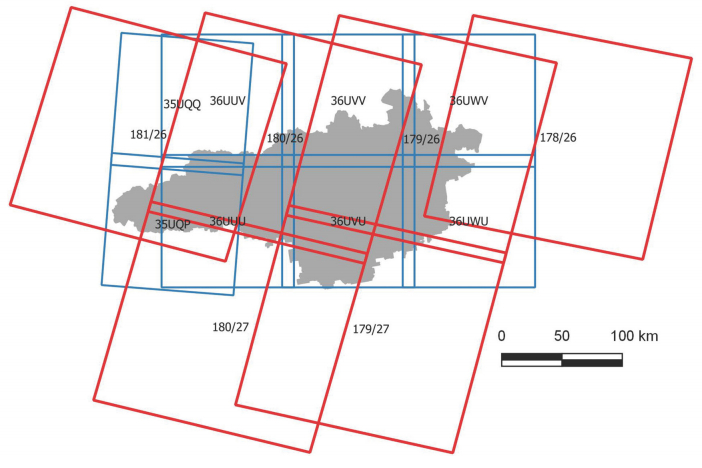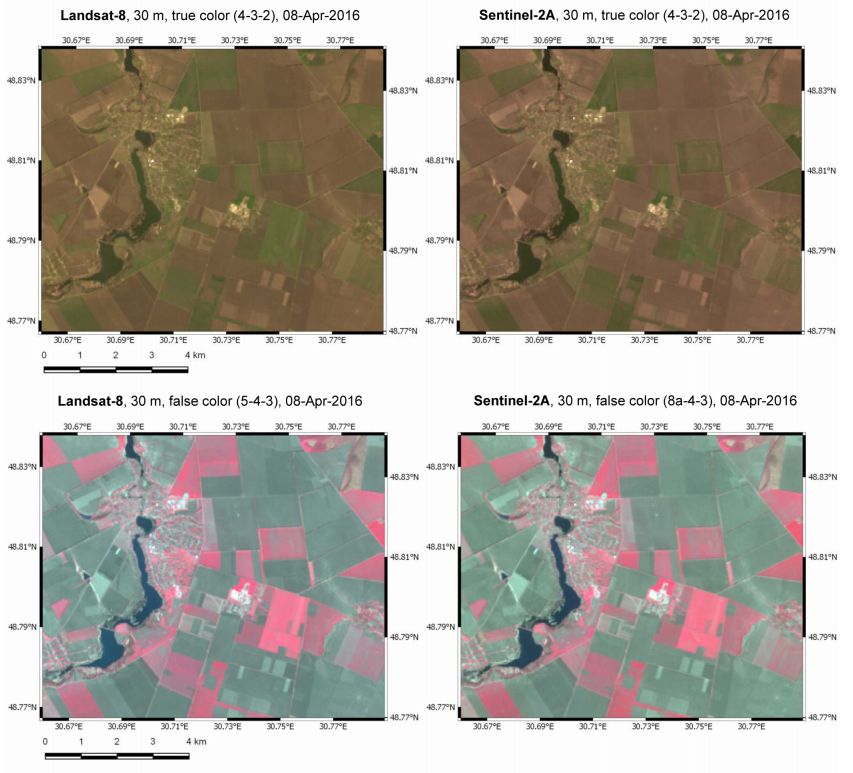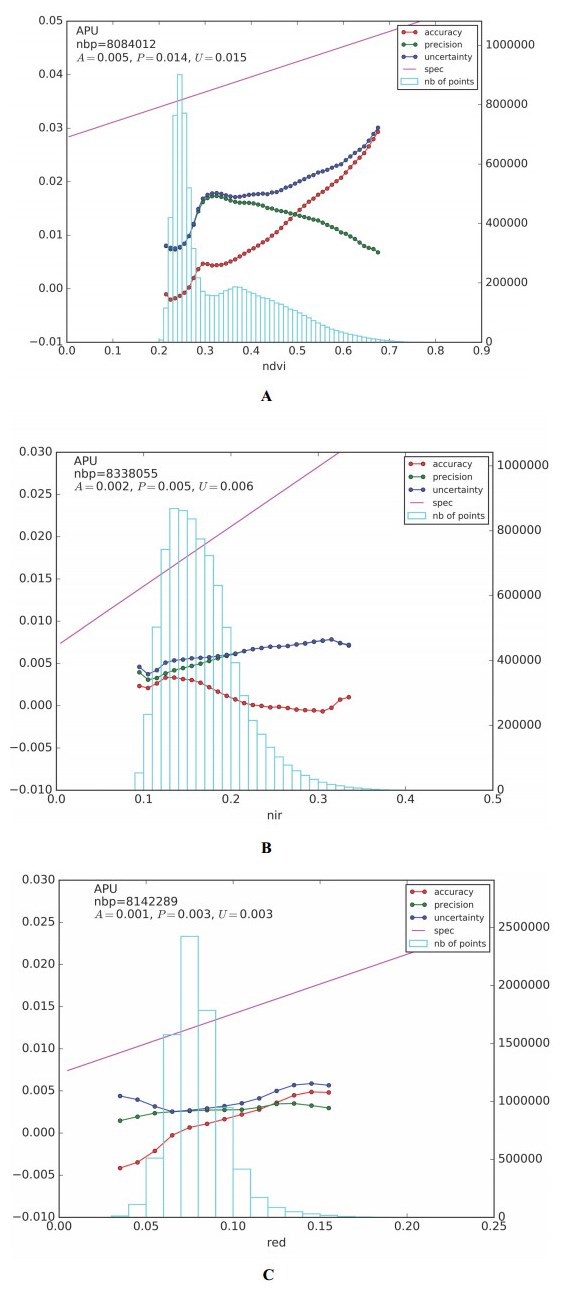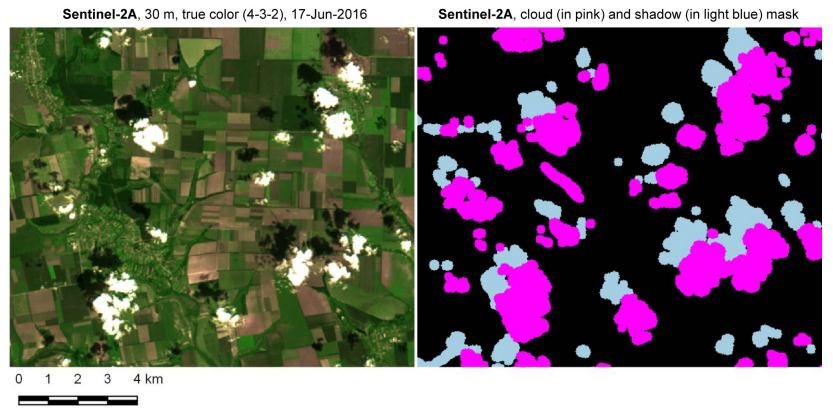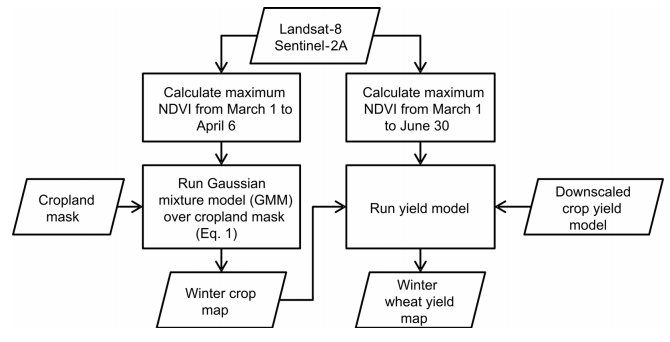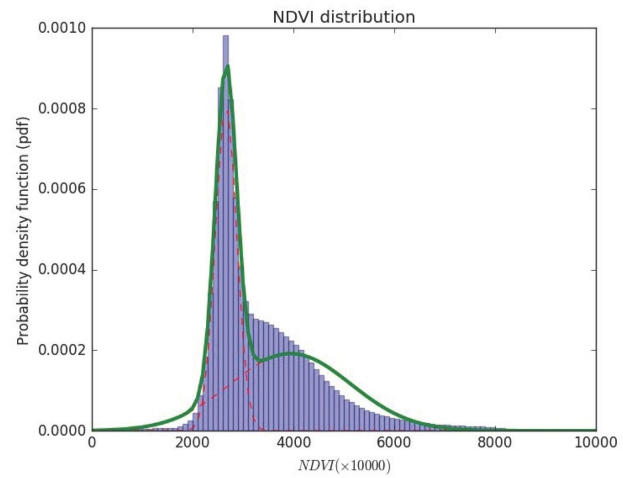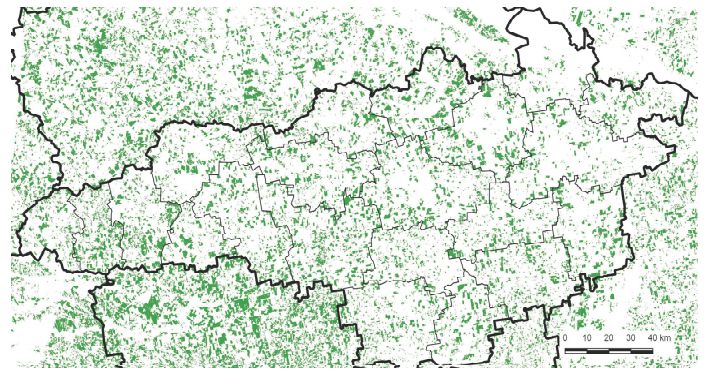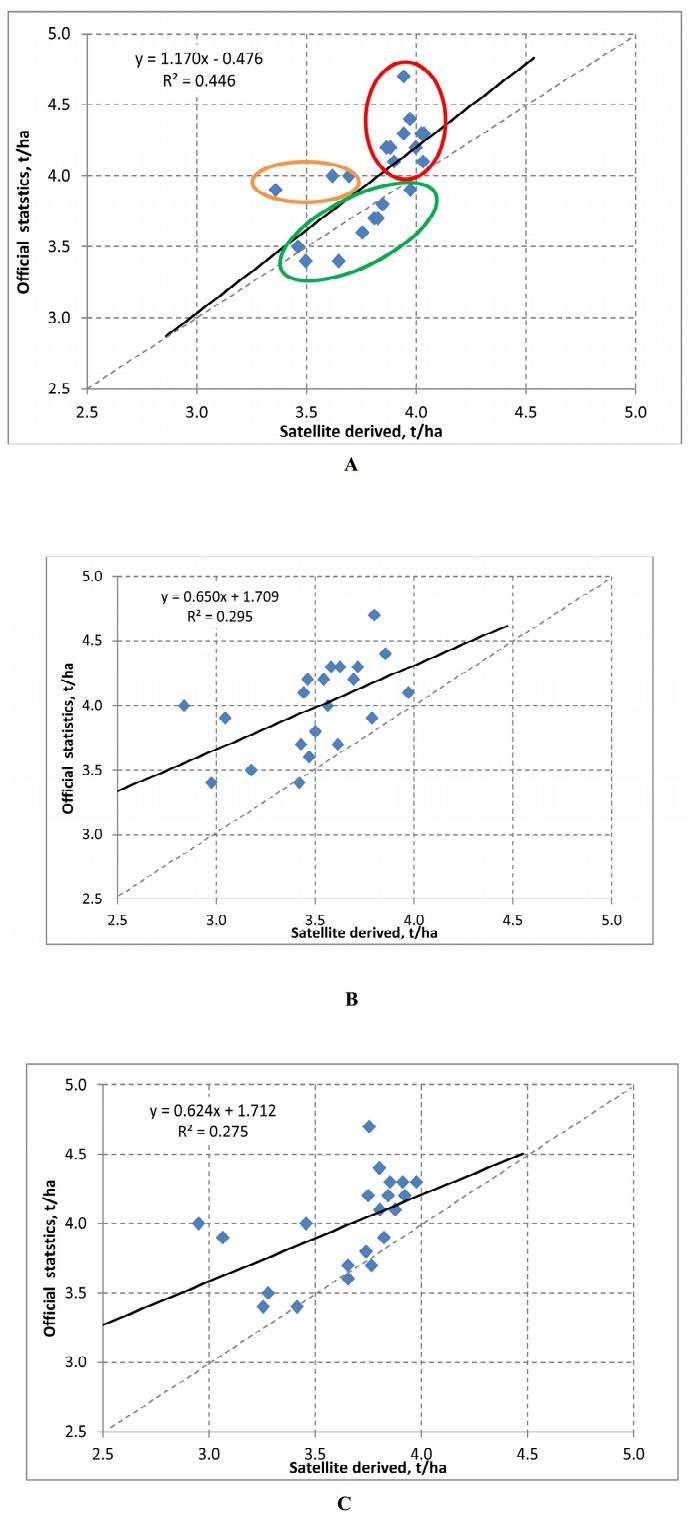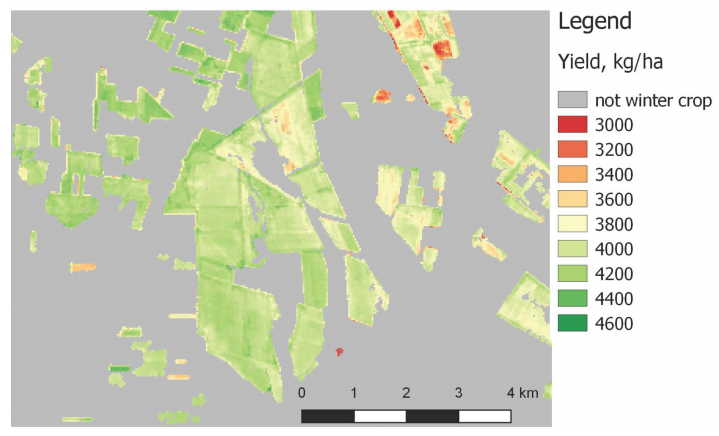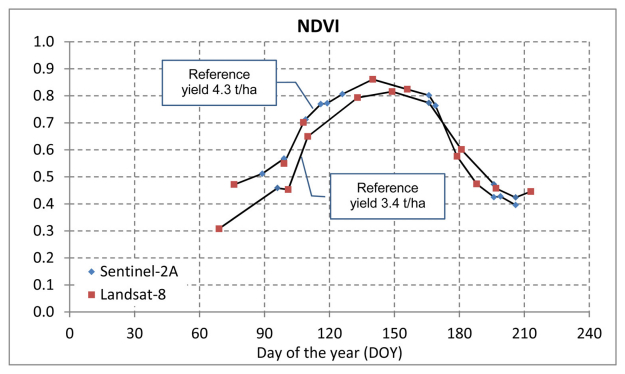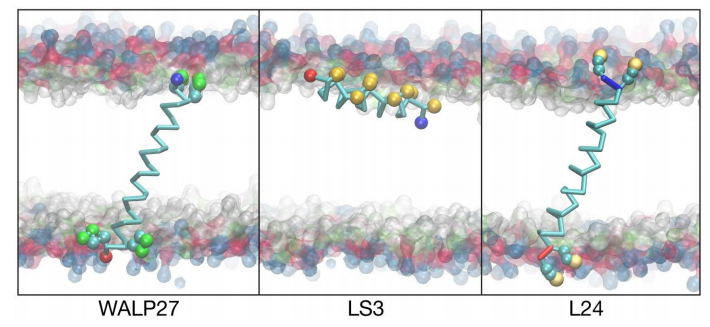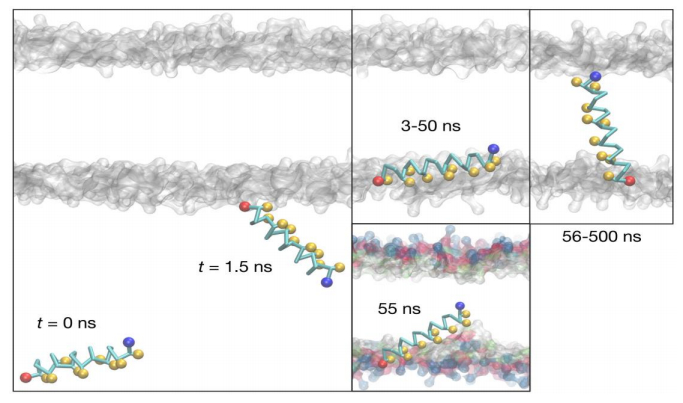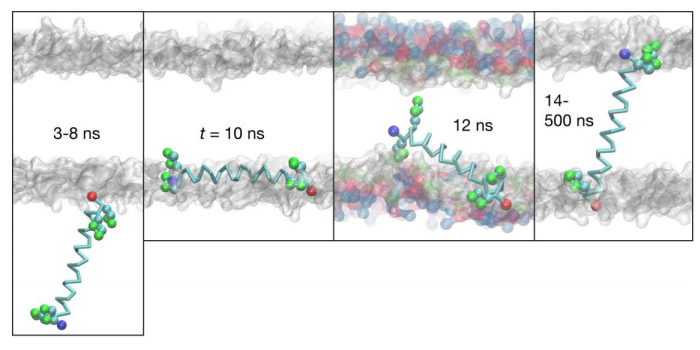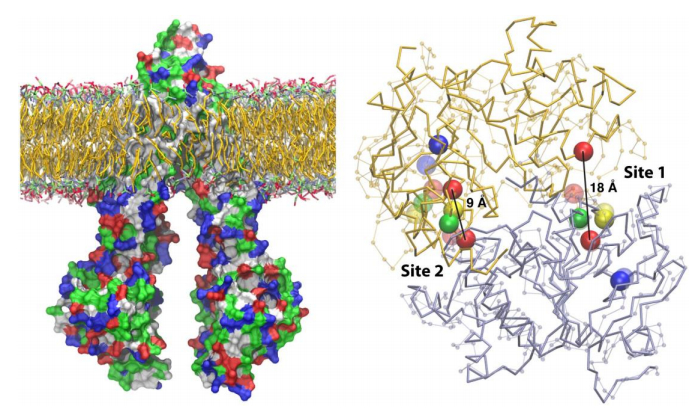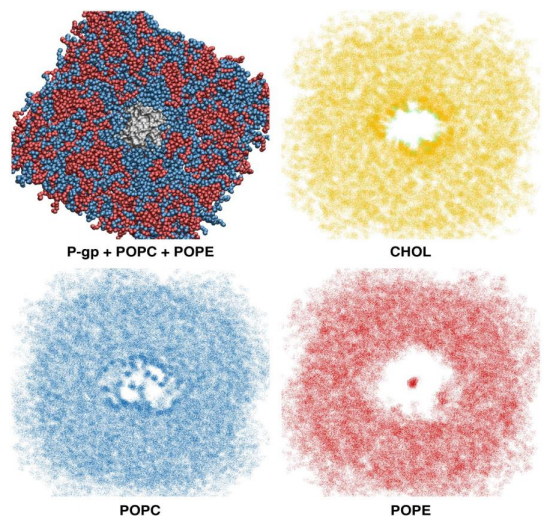| 1.
|
Martin Claverie, Junchang Ju, Jeffrey G. Masek, Jennifer L. Dungan, Eric F. Vermote, Jean-Claude Roger, Sergii V. Skakun, Christopher Justice,
The Harmonized Landsat and Sentinel-2 surface reflectance data set,
2018,
219,
00344257,
145,
10.1016/j.rse.2018.09.002
|
|
| 2.
|
Luka Rumora, Mario Miler, Damir Medak,
Contemporary comparative assessment of atmospheric correction influence on radiometric indices between Sentinel-2A and Landsat 8 imagery,
2021,
36,
1010-6049,
13,
10.1080/10106049.2019.1590465
|
|
| 3.
|
Jie Sun, Zulong Lai, Liping Di, Ziheng Sun, Jianbin Tao, Yonglin Shen,
Multilevel Deep Learning Network for County-Level Corn Yield Estimation in the U.S. Corn Belt,
2020,
13,
1939-1404,
5048,
10.1109/JSTARS.2020.3019046
|
|
| 4.
|
Shawn D. Donovan, David A. MacLean, Yun Zhang, Michael B. Lavigne, John A. Kershaw,
Evaluating annual spruce budworm defoliation using change detection of vegetation indices calculated from satellite hyperspectral imagery,
2021,
253,
00344257,
112204,
10.1016/j.rse.2020.112204
|
|
| 5.
|
Roya Mourad, Hadi Jaafar, Martha Anderson, Feng Gao,
Assessment of Leaf Area Index Models Using Harmonized Landsat and Sentinel-2 Surface Reflectance Data over a Semi-Arid Irrigated Landscape,
2020,
12,
2072-4292,
3121,
10.3390/rs12193121
|
|
| 6.
|
B. Franch, E.F. Vermote, S. Skakun, J.C. Roger, I. Becker-Reshef, E. Murphy, C. Justice,
Remote sensing based yield monitoring: Application to winter wheat in United States and Ukraine,
2019,
76,
03032434,
112,
10.1016/j.jag.2018.11.012
|
|
| 7.
|
Sarah E. Eichler, Keith L. Kline, Ivan Ortiz-Monasterio, Santiago Lopez-Ridaura, Virginia H. Dale,
Rapid appraisal using landscape sustainability indicators for Yaqui Valley, Mexico,
2020,
6,
26659727,
100029,
10.1016/j.indic.2020.100029
|
|
| 8.
|
Jianxi Huang, Jose L. Gómez-Dans, Hai Huang, Hongyuan Ma, Qingling Wu, Philip E. Lewis, Shunlin Liang, Zhongxin Chen, Jing-Hao Xue, Yantong Wu, Feng Zhao, Jing Wang, Xianhong Xie,
Assimilation of remote sensing into crop growth models: Current status and perspectives,
2019,
276-277,
01681923,
107609,
10.1016/j.agrformet.2019.06.008
|
|
| 9.
|
Nataliia Kussul, Mykola Lavreniuk, Andrii Kolotii, Sergii Skakun, Olena Rakoid, Leonid Shumilo,
A workflow for Sustainable Development Goals indicators assessment based on high-resolution satellite data,
2020,
13,
1753-8947,
309,
10.1080/17538947.2019.1610807
|
|
| 10.
|
Lilian Niacsu, Lucian Sfica, Adrian Ursu, Pavel Ichim, Diana Elena Bobric, Iuliana Gabriela Breaban,
Wind erosion on arable lands, associated with extreme blizzard conditions within the hilly area of Eastern Romania,
2019,
169,
00139351,
86,
10.1016/j.envres.2018.11.008
|
|
| 11.
|
Merryn L. Hunt, George Alan Blackburn, Luis Carrasco, John W. Redhead, Clare S. Rowland,
High resolution wheat yield mapping using Sentinel-2,
2019,
233,
00344257,
111410,
10.1016/j.rse.2019.111410
|
|
| 12.
|
Ewa Panek, Dariusz Gozdowski,
Relationship between MODIS Derived NDVI and Yield of Cereals for Selected European Countries,
2021,
11,
2073-4395,
340,
10.3390/agronomy11020340
|
|
| 13.
|
Piero Toscano, Annamaria Castrignanò, Salvatore Filippo Di Gennaro, Alessandro Vittorio Vonella, Domenico Ventrella, Alessandro Matese,
A Precision Agriculture Approach for Durum Wheat Yield Assessment Using Remote Sensing Data and Yield Mapping,
2019,
9,
2073-4395,
437,
10.3390/agronomy9080437
|
|
| 14.
|
Xiao-Peng Song, Wenli Huang, Matthew C. Hansen, Peter Potapov,
An evaluation of Landsat, Sentinel-2, Sentinel-1 and MODIS data for crop type mapping,
2021,
3,
26660172,
100018,
10.1016/j.srs.2021.100018
|
|
| 15.
|
Valerie J. Pasquarella, Christopher E. Holden, Curtis E. Woodcock,
Improved mapping of forest type using spectral-temporal Landsat features,
2018,
210,
00344257,
193,
10.1016/j.rse.2018.02.064
|
|
| 16.
|
Laura Piedelobo, David Hernández-López, Rocío Ballesteros, Amal Chakhar, Susana Del Pozo, Diego González-Aguilera, Miguel A. Moreno,
Scalable pixel-based crop classification combining Sentinel-2 and Landsat-8 data time series: Case study of the Duero river basin,
2019,
171,
0308521X,
36,
10.1016/j.agsy.2019.01.005
|
|
| 17.
|
Yuliia Bilokonska, Hanna Yailymova, Bohdan Yailymov, Andrii Shelestov, Leonid Shumilo, Mykola Lavreniuk,
2020,
Losses Assessment for Winter Crops Based on Satellite Data and Fuzzy Logic,
978-1-7281-9960-3,
1,
10.1109/IDAACS-SWS50031.2020.9297059
|
|
| 18.
|
S. Skakun, B. Franch, E. Vermote, J.-C. Roger, N. Kussul, J. Masek,
2019,
The Use of Landsat 8 and Sentinel-2 Data and Meterological Observations for Winter Wheat Yield Assessment,
978-1-5386-9154-0,
6291,
10.1109/IGARSS.2019.8898245
|
|
| 19.
|
Zhen Nie, Karen Kie Yan Chan, Bing Xu,
Preliminary Evaluation of the Consistency of Landsat 8 and Sentinel-2 Time Series Products in An Urban Area—An Example in Beijing, China,
2019,
11,
2072-4292,
2957,
10.3390/rs11242957
|
|
| 20.
|
B. Franch, E. Vermote, S. Skakun, J.-C. Roger, I. Becker-Reshef, C. Justice,
2018,
Enhancing Remote Sensing Based Yield Forecasting: Application to Winter Wheat in United States,
978-1-5386-7150-4,
8177,
10.1109/IGARSS.2018.8517604
|
|
| 21.
|
A. Brook, V. De Micco, G. Battipaglia, A. Erbaggio, G. Ludeno, I. Catapano, A. Bonfante,
A smart multiple spatial and temporal resolution system to support precision agriculture from satellite images: Proof of concept on Aglianico vineyard,
2020,
240,
00344257,
111679,
10.1016/j.rse.2020.111679
|
|
| 22.
|
Qingsheng Liu,
2018,
Extraction of Winter Wheat Planting Area in Binzhou-Dongying City Based on the WBSI Images of the Key Growth Phase,
978-1-5386-6642-5,
1,
10.1109/EORSA.2018.8598604
|
|
| 23.
|
Sergii Skakun, Eric Vermote, Belen Franch, Jean-Claude Roger, Nataliia Kussul, Junchang Ju, Jeffrey Masek,
Winter Wheat Yield Assessment from Landsat 8 and Sentinel-2 Data: Incorporating Surface Reflectance, Through Phenological Fitting, into Regression Yield Models,
2019,
11,
2072-4292,
1768,
10.3390/rs11151768
|
|
| 24.
|
Ali Nasrallah, Nicolas Baghdadi, Mohammad El Hajj, Talal Darwish, Hatem Belhouchette, Ghaleb Faour, Salem Darwich, Mario Mhawej,
Sentinel-1 Data for Winter Wheat Phenology Monitoring and Mapping,
2019,
11,
2072-4292,
2228,
10.3390/rs11192228
|
|
| 25.
|
S. Skakun, B. Franch, E. Vermote, J.-C. Roger, C. Justice, J. Masek, E. Murphy,
2018,
Winter Wheat Yield Assessment Using Landsat 8 and Sentinel-2 Data,
978-1-5386-7150-4,
5964,
10.1109/IGARSS.2018.8519134
|
|
| 26.
|
Yuval Sadeh, Xuan Zhu, Karine Chenu, David Dunkerley,
Sowing date detection at the field scale using CubeSats remote sensing,
2019,
157,
01681699,
568,
10.1016/j.compag.2019.01.042
|
|
| 27.
|
V.S. Manivasagam, Gregoriy Kaplan, Offer Rozenstein,
Developing Transformation Functions for VENμS and Sentinel-2 Surface Reflectance over Israel,
2019,
11,
2072-4292,
1710,
10.3390/rs11141710
|
|
| 28.
|
Yang Chen, Tim R. McVicar, Randall J. Donohue, Nikhil Garg, François Waldner, Noboru Ota, Lingtao Li, Roger Lawes,
To Blend or Not to Blend? A Framework for Nationwide Landsat–MODIS Data Selection for Crop Yield Prediction,
2020,
12,
2072-4292,
1653,
10.3390/rs12101653
|
|
| 29.
|
Jie Dong, Yangyang Fu, Jingjing Wang, Haifeng Tian, Shan Fu, Zheng Niu, Wei Han, Yi Zheng, Jianxi Huang, Wenping Yuan,
Early-season mapping of winter wheat in China based on Landsat and Sentinel images,
2020,
12,
1866-3516,
3081,
10.5194/essd-12-3081-2020
|
|
| 30.
|
Jinlong Fan, Xiaoyu Zhang, Chunliang Zhao, Zhihao Qin, Mathilde De Vroey, Pierre Defourny,
Evaluation of Crop Type Classification with Different High Resolution Satellite Data Sources,
2021,
13,
2072-4292,
911,
10.3390/rs13050911
|
|
| 31.
|
Feng Gao, Martha Anderson, Craig Daughtry, David Johnson,
Assessing the Variability of Corn and Soybean Yields in Central Iowa Using High Spatiotemporal Resolution Multi-Satellite Imagery,
2018,
10,
2072-4292,
1489,
10.3390/rs10091489
|
|
| 32.
|
Remy Fieuzal, Vincent Bustillo, David Collado, Gerard Dedieu,
Combined Use of Multi-Temporal Landsat-8 and Sentinel-2 Images for Wheat Yield Estimates at the Intra-Plot Spatial Scale,
2020,
10,
2073-4395,
327,
10.3390/agronomy10030327
|
|
| 33.
|
Hafez Fathipoor, Hossein Arefi, Reza Shah-Hosseini, Hossein Moghadam,
Corn forage yield prediction using unmanned aerial vehicle images at mid-season growth stage,
2019,
13,
1931-3195,
1,
10.1117/1.JRS.13.034503
|
|
| 34.
|
Jie Sun, Liping Di, Ziheng Sun, Yonglin Shen, Zulong Lai,
County-Level Soybean Yield Prediction Using Deep CNN-LSTM Model,
2019,
19,
1424-8220,
4363,
10.3390/s19204363
|
|
| 35.
|
César Alejandro Berlanga-Robles, Arturo Ruiz-Luna,
Assessing seasonal and long-term mangrove canopy variations in Sinaloa, northwest Mexico, based on time series of enhanced vegetation index (EVI) data,
2020,
28,
0923-4861,
229,
10.1007/s11273-020-09709-0
|
|
| 36.
|
Shi Chen, Lingling Fan, Shefang Liang, Hao Chen, Xiao Sun, Yanan Hu, Zhenhuan Liu, Jing Sun, Peng Yang,
Spatiotemporal Dynamics of the Northern Limit of Winter Wheat in China Using MODIS Time Series Images,
2020,
12,
2072-4292,
2382,
10.3390/rs12152382
|
|
| 37.
|
Minh Nguyen, Oscar Baez-Villanueva, Duong Bui, Phong Nguyen, Lars Ribbe,
Harmonization of Landsat and Sentinel 2 for Crop Monitoring in Drought Prone Areas: Case Studies of Ninh Thuan (Vietnam) and Bekaa (Lebanon),
2020,
12,
2072-4292,
281,
10.3390/rs12020281
|
|
| 38.
|
Md. Shahinoor Rahman, Liping Di, Eugene Yu, Chen Zhang, Hossain Mohiuddin,
In-Season Major Crop-Type Identification for US Cropland from Landsat Images Using Crop-Rotation Pattern and Progressive Data Classification,
2019,
9,
2077-0472,
17,
10.3390/agriculture9010017
|
|
| 39.
|
Michel E. D. Chaves, Michelle C. A. Picoli, Ieda D. Sanches,
Recent Applications of Landsat 8/OLI and Sentinel-2/MSI for Land Use and Land Cover Mapping: A Systematic Review,
2020,
12,
2072-4292,
3062,
10.3390/rs12183062
|
|
| 40.
|
Marco A. Zanella, Daniel M. de Queiroz, Domingos S. M. Valente, Francisco de A. de C. Pinto, Nerilson T. Santos,
MANAGEMENT CLASS DELIMITATION IN A SOYBEAN CROP USING ORBITAL IMAGES,
2019,
39,
1809-4430,
676,
10.1590/1809-4430-eng.agric.v39n5p676-683/2019
|
|
| 41.
|
Divyesh Varade, Anudeep Sure, Onkar Dikshit,
Potential of Landsat-8 and Sentinel-2A composite for land use land cover analysis,
2019,
34,
1010-6049,
1552,
10.1080/10106049.2018.1497096
|
|
| 42.
|
Yuanhuizi He, Changlin Wang, Fang Chen, Huicong Jia, Dong Liang, Aqiang Yang,
Feature Comparison and Optimization for 30-M Winter Wheat Mapping Based on Landsat-8 and Sentinel-2 Data Using Random Forest Algorithm,
2019,
11,
2072-4292,
535,
10.3390/rs11050535
|
|
| 43.
|
Rojalin Tripathy, K. N. Chaudhari, G. D. Bairagi, Om Pal, Rajesh Das, B. K. Bhattacharya,
Towards Fine-Scale Yield Prediction of Three Major Crops of India Using Data from Multiple Satellite,
2021,
0255-660X,
10.1007/s12524-021-01361-2
|
|
| 44.
|
Gebeyehu Abebe, Tsegaye Tadesse, Berhan Gessesse,
Combined Use of Landsat 8 and Sentinel 2A Imagery for Improved Sugarcane Yield Estimation in Wonji-Shoa, Ethiopia,
2022,
50,
0255-660X,
143,
10.1007/s12524-021-01466-8
|
|
| 45.
|
Murat Güven TUĞAÇ, A. Murat ÖZBAYOĞLU, Harun TORUNLAR, Erol KARAKURT,
Wheat Yield Prediction with Machine Learning based on MODIS and Landsat NDVI Data at Field Scale,
2022,
9,
2148-9173,
172,
10.30897/ijegeo.1128985
|
|
| 46.
|
A. D. Prasad, Padma Ganasala, R. Hernández-Guzmán, Farshad Fathian,
Remote sensing satellite data and spectral indices: an initial evaluation for the sustainable development of an urban area,
2022,
8,
2363-5037,
10.1007/s40899-022-00607-2
|
|
| 47.
|
Xiaobin Xu, Chenwei Nie, Xiuliang Jin, Zhenhai Li, Hongchun Zhu, Haigang Xu, Jianwen Wang, Yu Zhao, Haikuan Feng,
A comprehensive yield evaluation indicator based on an improved fuzzy comprehensive evaluation method and hyperspectral data,
2021,
270,
03784290,
108204,
10.1016/j.fcr.2021.108204
|
|
| 48.
|
Yiqun Xie, Majid Farhadloo, Ning Guo, Shashi Shekhar, Eric Watkins, Len Kne, Han Bao, Aaron J. Patton, Kevin Morris,
NTEP‐DB 1.0: A relational database for the national turfgrass evaluation program,
2022,
14,
2573-1513,
316,
10.1002/its2.76
|
|
| 49.
|
Yunus KAYA, Nizar POLAT,
A linear approach for wheat yield prediction by using different spectral vegetation indices,
2022,
2548-0960,
10.26833/ijeg.1035037
|
|
| 50.
|
Sidrah Hafeez, Man Sing Wong, Sawaid Abbas, Muhammad Asim,
Evaluating Landsat-8 and Sentinel-2 Data Consistency for High Spatiotemporal Inland and Coastal Water Quality Monitoring,
2022,
14,
2072-4292,
3155,
10.3390/rs14133155
|
|
| 51.
|
Brahim Benzougagh, Sarita Gajbhiye Meshram, Bouchta El Fellah, Mohamed Mastere, Mohamed El Basri, Ibrahim Ouchen, Driss Sadkaoui, Youssef Bammou, Nassima Moutaoikil, Benson Turyasingura,
Mapping of land degradation using spectral angle mapper approach (SAM): the case of Inaouene watershed (Northeast Morocco),
2023,
2363-6203,
10.1007/s40808-023-01711-8
|
|
| 52.
|
J. L. Pancorbo, M. Alonso-Ayuso, C. Camino, M. D. Raya-Sereno, P. J. Zarco-Tejada, I. Molina, J. L. Gabriel, M. Quemada,
Airborne hyperspectral and Sentinel imagery to quantify winter wheat traits through ensemble modeling approaches,
2023,
1385-2256,
10.1007/s11119-023-09990-y
|
|
| 53.
|
Jinlong Fan, Pierre Defourny, Xiaoyu Zhang, Qinghan Dong, Limin Wang, Zhihao Qin, Mathilde De Vroey, Chunliang Zhao,
Crop Mapping with Combined Use of European and Chinese Satellite Data,
2021,
13,
2072-4292,
4641,
10.3390/rs13224641
|
|
| 54.
|
Shengwei Liu, Dailiang Peng, Bing Zhang, Zhengchao Chen, Le Yu, Junjie Chen, Yuhao Pan, Shijun Zheng, Jinkang Hu, Zihang Lou, Yue Chen, Songlin Yang,
The Accuracy of Winter Wheat Identification at Different Growth Stages Using Remote Sensing,
2022,
14,
2072-4292,
893,
10.3390/rs14040893
|
|
| 55.
|
Bing-Bing Goh, Peter King, Rebecca L. Whetton, Sheida Z. Sattari, Nicholas M. Holden,
Monitoring winter wheat growth performance at sub-field scale using multitemporal Sentinel-2 imagery,
2022,
115,
15698432,
103124,
10.1016/j.jag.2022.103124
|
|
| 56.
|
Yue Wang, Zengxiang Zhang, Lijun Zuo, Xiao Wang, Xiaoli Zhao, Feifei Sun,
Mapping Crop Distribution Patterns and Changes in China from 2000 to 2015 by Fusing Remote-Sensing, Statistics, and Knowledge-Based Crop Phenology,
2022,
14,
2072-4292,
1800,
10.3390/rs14081800
|
|
| 57.
|
Akash Goyal, Mohit Kesarwani, N. Neeti, S. Maity, K. Mukesh, V. M. Chowdary, B. Bimal, C. S. Jha,
2022,
Chapter 10,
978-3-030-98980-4,
229,
10.1007/978-3-030-98981-1_10
|
|
| 58.
|
Yingjie Li, Jing Chen, Qingmiao Ma, Hankui K. Zhang, Jane Liu,
Evaluation of Sentinel-2A Surface Reflectance Derived Using Sen2Cor in North America,
2018,
11,
1939-1404,
1997,
10.1109/JSTARS.2018.2835823
|
|
| 59.
|
V.S. Manivasagam, Yuval Sadeh, Gregoriy Kaplan, David J. Bonfil, Offer Rozenstein,
Studying the Feasibility of Assimilating Sentinel-2 and PlanetScope Imagery into the SAFY Crop Model to Predict Within-Field Wheat Yield,
2021,
13,
2072-4292,
2395,
10.3390/rs13122395
|
|
| 60.
|
Alberto San Bautista, David Fita, Belén Franch, Sergio Castiñeira-Ibáñez, Patricia Arizo, María José Sánchez-Torres, Inbal Becker-Reshef, Antonio Uris, Constanza Rubio,
Crop Monitoring Strategy Based on Remote Sensing Data (Sentinel-2 and Planet), Study Case in a Rice Field after Applying Glycinebetaine,
2022,
12,
2073-4395,
708,
10.3390/agronomy12030708
|
|
| 61.
|
Shengjie Liu, Zhize Zhou, Huaxiang Ding, Yuanjun Zhong, Qian Shi,
Crop Mapping Using Sentinel Full-Year Dual-Polarized SAR Data and a CPU-Optimized Convolutional Neural Network With Two Sampling Strategies,
2021,
14,
1939-1404,
7017,
10.1109/JSTARS.2021.3094973
|
|
| 62.
|
Ruoque Shen, Jie Dong, Wenping Yuan, Wei Han, Tao Ye, Wenzhi Zhao,
A 30 m Resolution Distribution Map of Maize for China Based on Landsat and Sentinel Images,
2022,
2022,
2694-1589,
10.34133/2022/9846712
|
|
| 63.
|
Sam Purkis, Ved Chirayath,
Remote Sensing the Ocean Biosphere,
2022,
47,
1543-5938,
823,
10.1146/annurev-environ-112420-013219
|
|
| 64.
|
Giulia Ronchetti, Giacinto Manfron, Christof J. Weissteiner, Lorenzo Seguini, Luigi Nisini Scacchiafichi, Lorenzo Panarello, Bettina Baruth,
Remote sensing crop group-specific indicators to support regional yield forecasting in Europe,
2023,
205,
01681699,
107633,
10.1016/j.compag.2023.107633
|
|
| 65.
|
Sarchil Hama Qader, Chigozie Edson Utazi, Rhorom Priyatikanto, Peshawa Najmaddin, Emad Omer Hama-Ali, Nabaz R. Khwarahm, Andrew J. Tatem, Jadu Dash,
Exploring the use of Sentinel-2 datasets and environmental variables to model wheat crop yield in smallholder arid and semi-arid farming systems,
2023,
869,
00489697,
161716,
10.1016/j.scitotenv.2023.161716
|
|
| 66.
|
Yuan Fang, Linlin Xu, Alexander Wong, David A. Clausi,
Multi-Temporal Landsat-8 Images for Retrieval and Broad Scale Mapping of Soil Copper Concentration Using Empirical Models,
2022,
14,
2072-4292,
2311,
10.3390/rs14102311
|
|
| 67.
|
Stefano Marino,
Understanding the spatio-temporal behavior of crop yield, yield components and weed pressure using time series Sentinel-2-data in an organic farming system,
2023,
145,
11610301,
126785,
10.1016/j.eja.2023.126785
|
|
| 68.
|
Zhou Longfei, Meng Ran, Yu Xing, Liao Yigui, Huang Zehua, Lü Zhengang, Xu Binyuan, Yang Guodong, Peng Shaobing, Xu Le,
Improved Yield Prediction of Ratoon Rice Using Unmanned Aerial Vehicle-Based Multi-Temporal Feature Method,
2023,
30,
16726308,
247,
10.1016/j.rsci.2023.03.008
|
|
| 69.
|
Tasneem Ahmed, Nashra Javed, Mohammad Faisal, Halima Sadia,
2023,
Chapter 27,
978-981-19-7040-5,
345,
10.1007/978-981-19-7041-2_27
|
|
| 70.
|
Haoming Xia, Xiqing Bian, Li Pan, Rumeng Li,
Mapping tea plantation area using phenology algorithm, time-series Sentinel-2 and Landsat images,
2023,
44,
0143-1161,
2826,
10.1080/01431161.2023.2208713
|
|
| 71.
|
Muh. Jayadi, Asmita Ahmad,
2023,
2704,
0094-243X,
080002,
10.1063/5.0120940
|
|
| 72.
|
Ruoque Shen, Baihong Pan, Qiongyan Peng, Jie Dong, Xuebing Chen, Xi Zhang, Tao Ye, Jianxi Huang, Wenping Yuan,
High-resolution distribution maps of single-season rice in China from 2017 to 2022,
2023,
15,
1866-3516,
3203,
10.5194/essd-15-3203-2023
|
|
| 73.
|
Haiyang Zhang, Yao Zhang, Kaidi Liu, Shu Lan, Tinyao Gao, Minzan Li,
Winter wheat yield prediction using integrated Landsat 8 and Sentinel-2 vegetation index time-series data and machine learning algorithms,
2023,
213,
01681699,
108250,
10.1016/j.compag.2023.108250
|
|
| 74.
|
Bo Yang, Jinglei Wang, Shenglin Li, Xiuqiao Huang,
Identifying the Spatio-Temporal Change in Winter Wheat–Summer Maize Planting Structure in the North China Plain between 2001 and 2020,
2023,
13,
2073-4395,
2712,
10.3390/agronomy13112712
|
|
| 75.
|
Yiqun Wang, Hui Huang, Radu State,
Early Crop Mapping Using Dynamic Ecoregion Clustering: A USA-Wide Study,
2023,
15,
2072-4292,
4962,
10.3390/rs15204962
|
|
| 76.
|
Jorge Celis, Xiangming Xiao, Pradeep Wagle, Jeffrey Basara, Heather McCarthy, Lara Souza,
A comparison of moderate and high spatial resolution satellite data for modeling gross primary production and transpiration of native prairie, alfalfa, and winter wheat,
2024,
344,
01681923,
109797,
10.1016/j.agrformet.2023.109797
|
|
| 77.
|
Jorge Celis, Xiangming Xiao, Paul M. White, Osvaldo M. R. Cabral, Helber C. Freitas,
Improved Modeling of Gross Primary Production and Transpiration of Sugarcane Plantations with Time-Series Landsat and Sentinel-2 Images,
2023,
16,
2072-4292,
46,
10.3390/rs16010046
|
|
| 78.
|
Ilina Kamenova, Milen Chanev, Petar Dimitrov, Lachezar Filchev, Bogdan Bonchev, Liang Zhu, Qinghan Dong,
Crop Type Mapping and Winter Wheat Yield Prediction Utilizing Sentinel-2: A Case Study from Upper Thracian Lowland, Bulgaria,
2024,
16,
2072-4292,
1144,
10.3390/rs16071144
|
|
| 79.
|
Saurabh Srivastava, Tasneem Ahmed,
DLCD: Deep learning-based change detection approach to monitor deforestation,
2024,
1863-1703,
10.1007/s11760-024-03140-1
|
|
| 80.
|
Yifei Liu, Xuehong Chen, Jin Chen, Yunze Zang, Jingyi Wang, Miao Lu, Liang Sun, Qi Dong, Bingwen Qiu, Xiufang Zhu,
Long-term (2013–2022) mapping of winter wheat in the North China Plain using Landsat data: classification with optimal zoning strategy,
2024,
2096-4471,
1,
10.1080/20964471.2024.2363552
|
|
| 81.
|
Mehrtash Manafifard, Jianxi Huang,
A comprehensive review on wheat yield prediction Based on remote sensing,
2024,
1573-7721,
10.1007/s11042-024-19820-6
|
|
| 82.
|
Remy Fieuzal, Vincent Bustillo, David Collado, Gerard Dedieu,
2019,
Estimation of Wheat Yields at the Intra-Plot Scale by Combining Multi-Temporal Landsat-8 and Sentinel-2 Images,
14,
10.3390/IECG2019-06220
|
|
| 83.
|
Josephine Bukowiecki, Till Rose, Henning Kage,
Assessment of the impact of accurate green area index, water regime and harvest index on site-specific wheat yield estimation,
2024,
226,
01681699,
109429,
10.1016/j.compag.2024.109429
|
|
| 84.
|
Haiyang Zhang, Yao Zhang, Fanghui Tong, Minzan Li,
A novel winter wheat yield prediction framework using fused spatial–temporal-spectral (STS) information from Sentinel-2 and Landsat 8 via improved Pix2Pix network,
2025,
231,
01681699,
109982,
10.1016/j.compag.2025.109982
|
|
| 85.
|
Gaoxiang Yang, Xingrong Li, Yuan Xiong, Meng He, Lei Zhang, Chongya Jiang, Xia Yao, Yan Zhu, Weixing Cao, Tao Cheng,
Annual winter wheat mapping for unveiling spatiotemporal patterns in China with a knowledge-guided approach and multi-source datasets,
2025,
225,
09242716,
163,
10.1016/j.isprsjprs.2025.04.031
|
|
| 86.
|
М.В. Колодяжный, В.Ф. Попович, Е.А. Дунаева, В.С. Паштецкий,
ОСОБЕННОСТИ ПРОВЕДЕНИЯ КЛАССИФИКАЦИИ ЗЕМЕЛЬ СЕЛЬСКОХОЗЯЙСТВЕННОГО НАЗНАЧЕНИЯ НА ОСНОВЕ ДАННЫХ ДИСТАНЦИОННОГО ЗОНДИРОВАНИЯ ЗЕМЛИ
,
2025,
20720386,
17,
10.26178/AE.2025.12.48.001
|
|









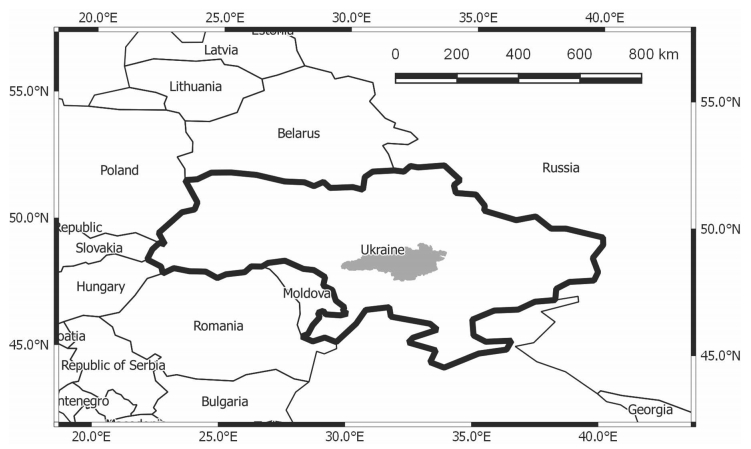
 DownLoad:
DownLoad: 